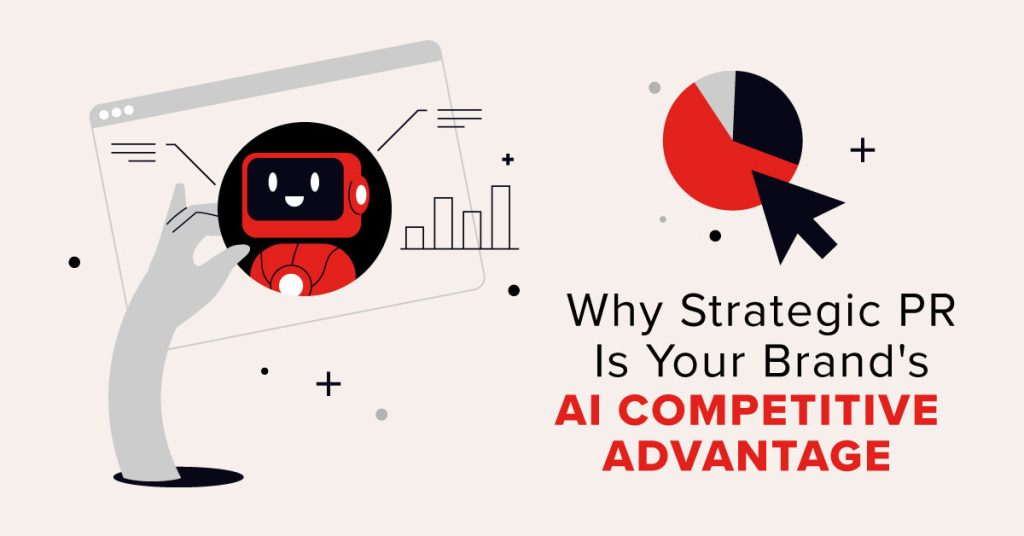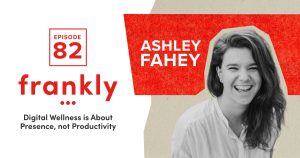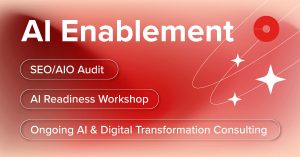La capsula Informativa: Why Strategic PR Is Your Brand’s AI Competitive Advantage

PR professionals have long struggled with getting a seat at the table. Correlating PR efforts to KPIs isn’t always linear. Digital efforts became the star student because it was easier to track and measure results.
Then the pandemic hit, and many company leaders brought their PR and communications leads directly to the table, recognizing the importance of communicating with all their audiences.
Based on my experience this year (and verified by a very informal qualitative poll I conducted with other communications professionals), the pendulum continues to swing more toward PR, brand reputation and brand awareness in terms of what leaders consider highly important for marketing/comms programs.
This makes me wonder: Are more brand leaders making the connection between building authority through PR efforts and their brands being cited by large language models (LLMs) like ChatGPT, Claude and Perplexity?
LLMs pull answers from publicly available sources—many of which are high-authority, third-party sites. They cite national and regional media outlets, industry publications, review sites, Wikipedia and Reddit (to name a few). If your brand isn’t being mentioned on credible media outlets, industry lists or podcast transcripts, it’s less likely to get pulled into LLM answers.
LLMs lean on the same principles as traditional SEO. And earned media remains essential for authority and discoverability, whether it’s through an LLM or SEO efforts. In traditional SEO, that authority helps content rank higher. With AI, trusted brand mentions have even greater influence, directly shaping how and where a brand appears in AI-generated results.
When you view PR through a generative AI lens, it transforms from a “nice to have” into a core input for brand trust and visibility.
As AI platforms reshape how consumers discover brands, we’re witnessing the emergence of “AI-first brand discovery,” where your brand’s visibility depends on being referenced by trusted sources that AI systems prioritize.
To increase brand discoverability, consider SEO and AIO (AI optimization). While related, the two have distinct focuses. SEO prioritizes specific keywords and backlinks (among other things) to determine search rankings. AIO prioritizes content that is optimized for and easily understood by LLMs. LLMs also reward brands that consistently appear in authoritative third-party content. This means companies must rethink their approach to earning visibility.
This is where strategic PR becomes indispensable. Rather than simply driving awareness, PR creates the credible, contextual mentions that AI systems use to determine which brands deserve to be recommended in response to user queries.
PR is a powerful tool in your toolbox to support AI discoverability. PR helps brands earn high-authority content that GenAI tools are trained to trust.
Here’s how to evolve your approach:
Focus on authoritative mentions. Rather than chasing coverage volume, prioritize outlets where your target audience and AI systems both look for credible information. Different LLMs prioritize pulling content from different sites. Do some research to understand which sites the various LLMs source from.
Prioritize podcasts with transcripts. Audio content with searchable transcripts increases your chances of being discovered by AI systems.
Structure your press releases strategically. Some media outlets copy and paste releases or use large portions without rewriting. Make your releases structured and scannable and include bullet summaries to increase LLM pickup. Also, put those well-structured press releases in a news or company updates section on your website.
Maintain consistent coverage. Getting your brand repeatedly mentioned across high-trust channels supports AI discoverability efforts. This is why PR must be an ongoing program, not a start-and-stop one. One month with 25 pieces of coverage followed by six months of silence isn’t a smart strategy.
Earned media is one component of the PESO Modelᴿ, which is created and owned by Gini Dietrich of Spin Sucks, and I’ve long preached the importance of having an integrated communications strategy. While PR is crucial for AI discoverability, so is your owned content.
The way people find and evaluate information is changing. It’s not always happening on your site. When someone does reach your site, it’s often after seeing multiple touchpoints elsewhere. Your content should reflect that context and support quick decision-making.
If you’re reading this and feeling overwhelmed, I get it. The PR/marketing world feels like it never stays the same for very long. But if you flip your mindset from overwhelm to opportunity, you’ll feel energized and motivated to figure out how to intersect PR with AI.
Here are a few final takeaways:
Don’t abandon earned media. Budget cuts are a reality. But if PR is on the chopping block, fight to keep it part of your comms and marketing mix. Keep building relationships with journalists to secure coverage (something an LLM can’t do) and continue contributing to high-trust, high-authority sites relevant to your audiences.
Feed the AI machines strategically. Getting your brand repeatedly mentioned on trusted channels creates the “ranking” signals LLMs recognize.
Align your teams. Content, SEO, AI, marketing and PR efforts should support one another and ladder up to broader business goals.
The future of brand visibility isn’t just about being found—it’s about being trusted enough to be recommended. That trust comes from the credible, third-party validation that only strategic PR can deliver. The companies that recognize this shift and act on it now will have a significant advantage as AI tools continue to evolve and more consumers turn to those tools as a trusted source.



